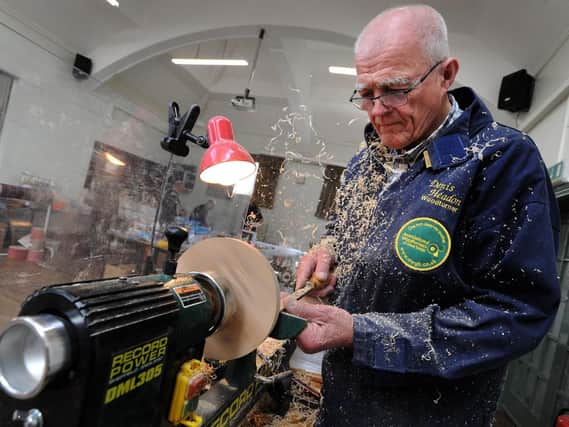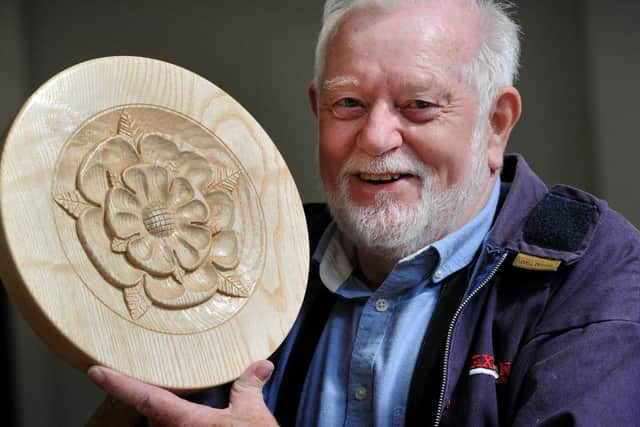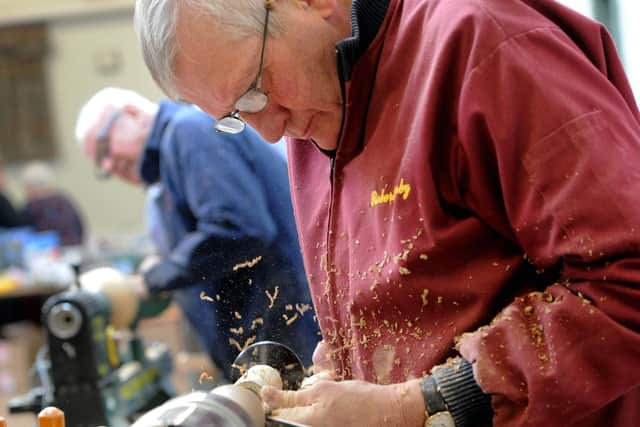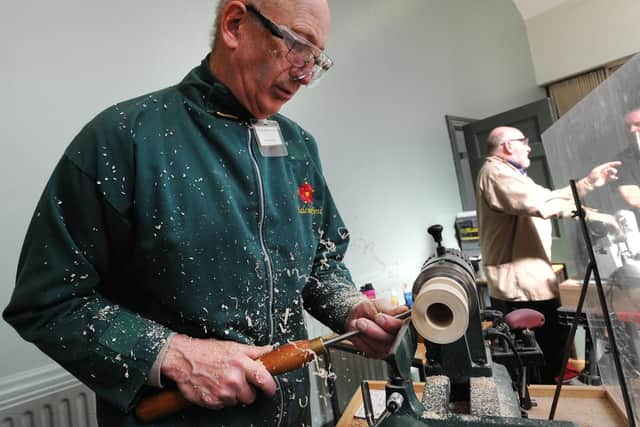Woodturning: 1,500-year-old craft back with a bang in Bilsborrow


Whilst its historical origins are naturally hard to pinpoint owing to wood fibre’s predilection to rot over the centuries, the process has been around since at least the times of the Ancient Egyptians. A range of civilisations from the Chinese, the Persians, the Arabs, and the Romans also had their own woodturning techniques, carving ornate shapes into timber rotated on a lathe.
The paradigm is not unlike that of a potter’s wheel, with an assortment of gouges and chisels used to strip careful layers from the turning wood. The wood lathe was sufficiently difficult to operate so as to be known as ‘the misterie’ of the turners guild, but the results were and still are stunning.
Advertisement
Hide AdAdvertisement
Hide AdBetween 500 and 1500 AD, most cups and bowls were wood-turned. When Scandinavian archaeologists discovered a 70-foot interred Viking ship called the Oseberg in a 9th century burial site, a handful of wood-turned vessels were found. An ancient art indeed.


But fast-forward to the 21st century, and there is more than ample enthusiasm for keeping the delicate artisinal skill alive.
“Woodturning is basically attaching timber to a machine, rotating it up to a couple of thousand revs a minute, and attacking it with a sharp tool,” says Colin Dennison (81) casually. “It’s quite simple really.
“It’s a gentle thing; therapeutic. I can go out to the garage and four or five hours go like that,” he says with a sharp click of his craftsman’s fingers. “Many years ago, I went into the garage at 7pm, turned the radio on to check the time, and the midnight news came on!”
Advertisement
Hide AdAdvertisement
Hide AdBorn and bred in Blackpool, Colin is secretary of the Red Rose Woodturning Club, which meets on the third Monday of each month at Bilsborrow Village Hall. One of 128 clubs belonging to the Association of Woodturners in Great Britain (AWGB), the club is part of a movement to promote the virtues of working with your hands, fostering an interest in woodturning and helping members to hone their skills in a friendly environment.


Red Rose Woodturning Club holds hands-on evening workshops for beginners, as well as various club competitions for novices, intermediates, and experts. Thanks to a lottery grant, they now record woodturning demonstrations by local, national, and international experts which are then projected onto a large screen for members to observe in minute detail. These people are artists.
“I first did [woodturning] in my 20s,” explains Colin. “I was at a vocational wood-working class and in the last three weeks I’d finished what I was doing and so I said to the tutor ‘Can I do a bit of woodturning?’ He fixed me up a bit of mahogany and from that I turned a bowl.
“That was in the late 50s and I’ve still got that bowl at home,” Colin adds. “It was glued with old glue made from horses hooves - it smelled foul when you used it - and over the years I’ve had to add a bit of modern glue, but it’s still there. I’m proud of that - it stands up against my current output.”
Advertisement
Hide AdAdvertisement
Hide AdWith approximately 100 members, the Red Rose Woodturning Club - formed in the late ‘90s - usually has around 60 to 70 people at each meeting. Always welcoming of new faces keen to try their hand at the craft, the club owns a couple of lathes themselves for newcomers, with full members tending to bring in their own contraptions, which - starting at around £300 - can cost a pretty penny indeed.


Taking up woodturning more regularly after his family bought him a lathe in 1993, Colin - himself a fan of making clocks and potpourri bowls - says the club make all sorts. “We make everything from boxes and platters to bowls and spindles, and we use all kinds of woods.
“I like English hard-woods: oak, ash, cherry,” he continues. “I like to see the natural grain. It’s a fascinating hobby, and any mistakes soon become design alterations, shall we say!”
For more information, head to https://rrwtc.wordpress.com/